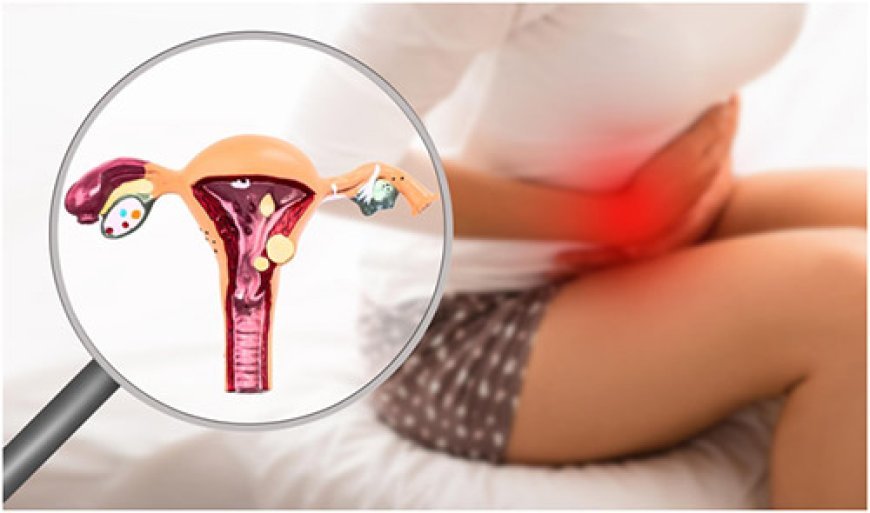Endometriosis
Endometriosis is a complex and often misunderstood medical condition that affects millions of women worldwide.

Endometriosis: Unraveling the Intricacies of a Silent Intruder
Endometriosis is a complex and often misunderstood medical condition that affects millions of women worldwide. Despite its prevalence, the disorder remains elusive, both in terms of its definitive cause and optimal treatment strategies. This essay delves into the intricacies of endometriosis, exploring its manifestations, impact on women's lives, current understanding, and avenues for research and management.
The Basics of Endometriosis
Endometriosis primarily involves the abnormal growth of endometrial-like tissue outside the uterus. The endometrium, a tissue that normally lines the inside of the uterus, undergoes cyclical changes in response to hormonal fluctuations during the menstrual cycle. In endometriosis, these tissues grow on organs such as the ovaries, fallopian tubes, and pelvic lining.
The Unseen Struggles
While the disorder's physical manifestations can be profound, its impact extends beyond the anatomical. Pain, ranging from mild discomfort to debilitating agony, is a hallmark of endometriosis. Women with the condition often experience pelvic pain, painful menstruation (dysmenorrhea), pain during intercourse, and gastrointestinal discomfort. The unpredictability and intensity of these symptoms can significantly diminish the quality of life for those affected.
The Diagnostic Challenge
Diagnosing endometriosis is notoriously challenging. The symptoms can mimic other gynecological conditions, leading to delays in accurate diagnosis. Laparoscopic surgery, wherein a thin tube with a camera is inserted through a small incision, remains the gold standard for definitive diagnosis. However, this invasive approach may not be suitable for everyone, prompting a search for non-invasive diagnostic tools.
Seeking the Origins
The exact cause of endometriosis remains elusive. Several theories attempt to unravel its origins, including retrograde menstruation, where menstrual blood flows backward into the pelvic cavity, genetic predisposition, and immune system dysfunction. While each theory contributes to our understanding, the interplay of these factors in the development of endometriosis is complex and multifaceted.
Endometriosis and Fertility
Fertility challenges are a significant concern for women with endometriosis. The abnormal tissue growth can lead to the formation of adhesions, scarring, and anatomical distortions that affect reproductive organs. While not all women with endometriosis experience fertility issues, the condition remains a common contributor to infertility. Assisted reproductive technologies, such as in vitro fertilization (IVF), are often considered for those struggling to conceive.
Treatment Landscape
The management of endometriosis aims to alleviate symptoms, improve quality of life, and address fertility concerns. Pharmacological interventions include pain medications, hormonal therapies, and gonadotropin-releasing hormone (GnRH) agonists. Surgical options involve the removal or destruction of endometrial tissue through laparoscopy. The choice of treatment depends on factors such as symptom severity, desire for fertility, and individual patient preferences.
Emerging Research Frontiers
Advancements in understanding endometriosis have spurred ongoing research into novel diagnostic approaches and targeted therapies. Biomarkers, substances indicative of the presence or progression of the disease, are a focus of investigation for non-invasive diagnostic tools. Additionally, researchers are exploring the role of the immune system in the development and persistence of endometriosis, offering potential avenues for immune-modulating treatments.
The Holistic Approach
The management of endometriosis extends beyond medical interventions. Holistic approaches encompass lifestyle modifications, nutritional strategies, and psychological support. Exercise, dietary changes, and mindfulness techniques may contribute to symptom management and overall well-being. Integrating these aspects into the treatment plan acknowledges the multifaceted nature of endometriosis and seeks to address its impact on various aspects of a person's life.
Advocacy and Awareness
Endometriosis advocacy plays a crucial role in raising awareness, promoting research, and fostering a supportive community. The invisibility of the disorder, coupled with societal taboos around menstruation, has contributed to a lack of understanding and empathy. Advocacy efforts aim to destigmatize endometriosis, empower affected individuals, and drive research funding for a better understanding of the condition.
Endometriosis is a complex and enigmatic medical condition that affects millions of women globally. Its far-reaching impact on physical health, fertility, and quality of life underscores the need for continued research, awareness, and advocacy. As the medical community strives to unravel the intricacies of endometriosis, a holistic and patient-centered approach remains paramount in addressing the diverse challenges posed by this silent intruder.
